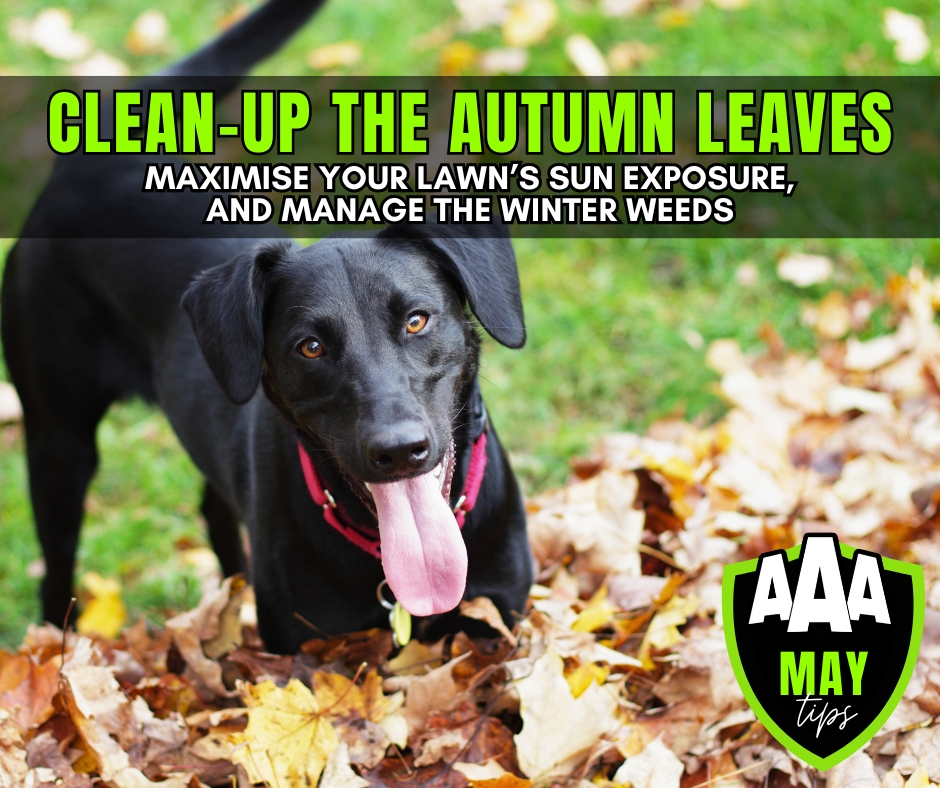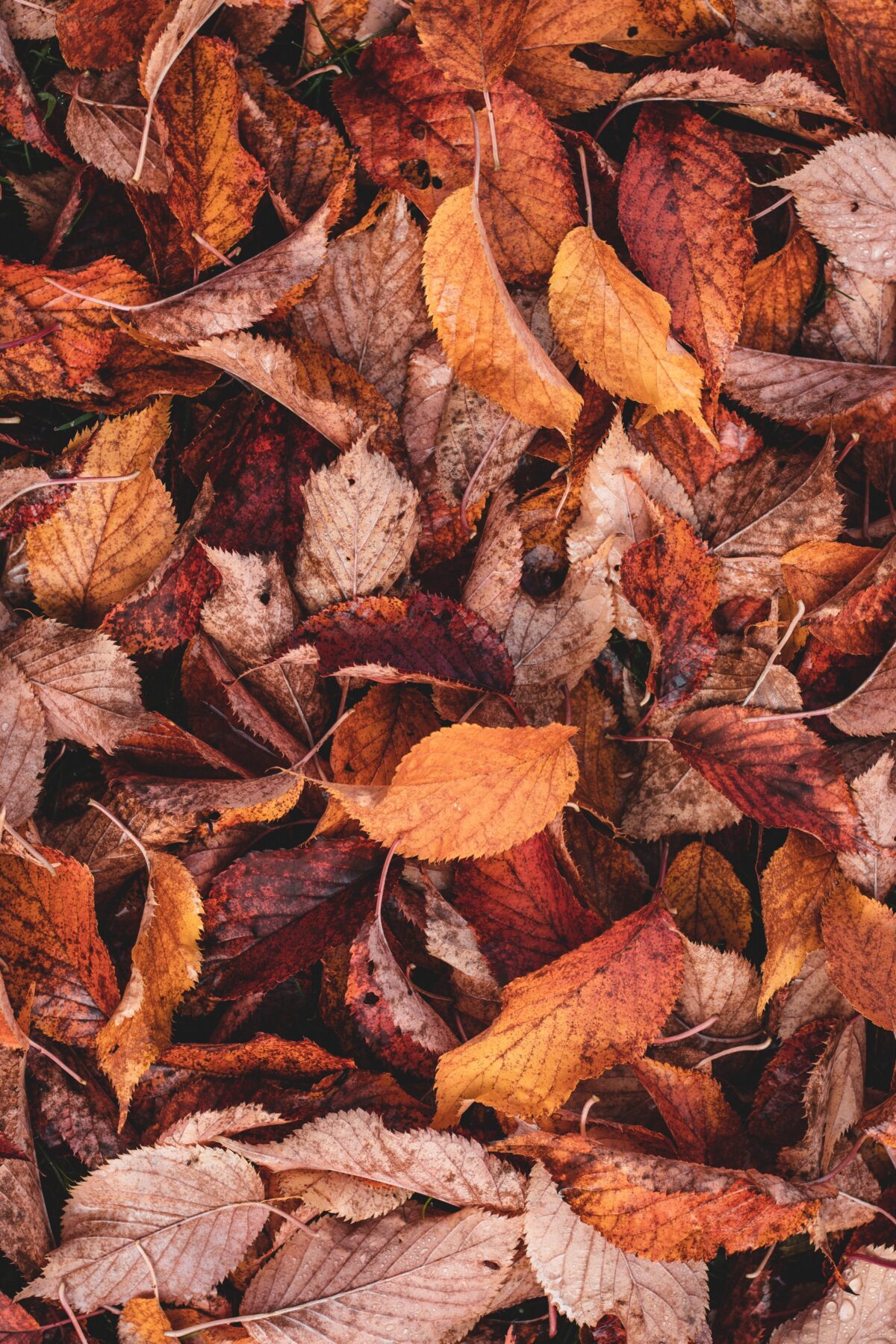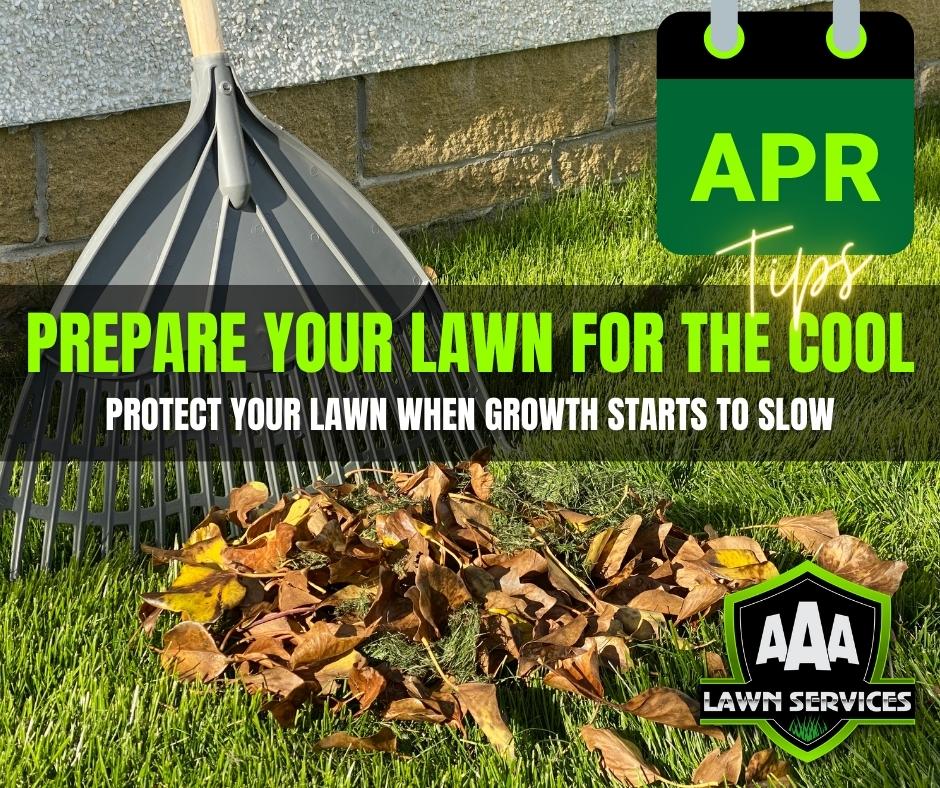Preparation for the cooler weather
Autumn is the time to prepare your lawn for the cooler months ahead, when growth slows. Here’s how:
Rake the Leaves
A build up of fallen leaves on the ground can damage your lawn. Be sure to either rake them up, or if it’s just a few, mow with a catcher. Leaves left to decompose on the lawn can starve it of sunlight and increase the risk of disease.
Fertilise
Autumn is fertilising time. Fertilising will give your lawn the boost it needs to keep it healthy through winter. It will also help prevent weeds from taking hold while your lawn’s growth rate slows.
A slow-release, granular fertiliser applied early to mid-autumn will gently feed your lawn and give you the best results. Check the forecast and fertilise just before rain is predicted, otherwise a light water after fertilising will help protect the lawn against leaf burn.
Attack the Weeds & Grubs
Broad leaf weeds and lawn grubs can take hold in autumn. If you notice any of these appearing, take control of them before they become established.
A general broad leaf weed killer that’s safe for your lawn variety will take care of most broad leaf weeds, however if you’re unsure, it’s best to chat with us.
Birds on your lawn, or bare patches can often mean lawn grubs. If you think you have them, it’s also best to speak to our friendly team for the best advice on how to treat them for your lawn.
Lift Your Mower Height
Raise the height of your mower a couple of notches. Mowing your lawn a little longer in autumn helps it absorb more sunlight and protects it from the cooler weather.
De-thatch
De-thatching removes older grass and mulch build-up from the under-layers of your lawn and encourages new and thick growth.
To de-thatch, rigorously rake your lawn with a metal rake or thatching rake to remove the thatch. To de-thatch with a mower, lower your mower height one notch and mow the grass. Repeat this 2-3 times, each time lowering the mower height by another notch.
White curl grubs: Active in early winter and feeding on lawns have been identified as pasture cockchafers. Populations build up under similar conditions that favour African Black Beetle, but larvae (curl grubs) are active from late autumn through to September. It is the timing of their life cycle that differs.
Beetle larvae continue to be active if late autumn weather is warm. Signs of larvae activity are characterised by magpies pecking at the lawn after the grubs, and small tufts or clumps of dead turf lying loose on the lawn. These almost give the appearance that someone has done some hand-weeding. Get down on your hands and knees and gently lift any patched of yellowing or dying turf. If the grass lifts away from the soil then this is certain evidence that larvae are present.
Moss may have commenced to grow on damp shaded areas of lawn. Moss is usually due to three factors.
- Poor drainage – either the soil is compacted, poorly constructed, or clay-rich and soggy; and
- the soil pH is too high. Most turf grasses require soil pH to be between 5.5 and 6.5, slightly on the acid side of neutral.
- the mossy area is heavily shaded.
Iron sulphate gives good control of moss and algae and will lower soil pH. AAA can apply an iron rich fertiliser to combat this problem.
Moss will quickly return unless poor soil drainage and overwatering are remedied. Sow shade tolerant turf grasses such as Poa trivialis and creeping red fescue. Mow the grass a little higher to increase turf density and prevent it from thinning out and becoming susceptible to weed and moss invasion. A common feature of mossy lawns is an accumulation of thatch which chokes the turf grass. This will need to be raked out or scarified. Another reason for mossy lawns is underfeeding.
Weed control: Winter active weeds are commencing to germinate now. The objective of weed control is to eradicate the weed as soon as possible after it appears, and before it produces flowers and seeds. Weed control should be aimed at eliminating and avoiding conditions that contribute to weed establishment and growth. Control should not rely on one method only, but should involve a combination of methods that will discourage weeds while encouraging desired plants.
Regular mowing will prevent tall growing weeds in lawns from flowering and seeding and gradually deplete food reserves in perennial weeds. Mowing will also encourage spreading and thickening of lawn grasses, preventing germination of annual weed seeds. Unfortunately, mowing may also encourage the growth of prostrate weeds which are below mowing height, eg. common cotula (Cotula australis), dandelion, creeping oxalis (Oxalis corniculata). Some of these flower very close to the ground, therefore hand weeding or herbicide control need to be used in conjunction with mowing.
Wintergrass (Poa annua) is a small winter-growing annual grass forming a tussock up to 10cm tall. It first appears about May, with the onset of colder weather and fewer hours of sunlight, and continues to germinate throughout winter and early spring. Seed heads develop in mid-winter and continue into spring.







